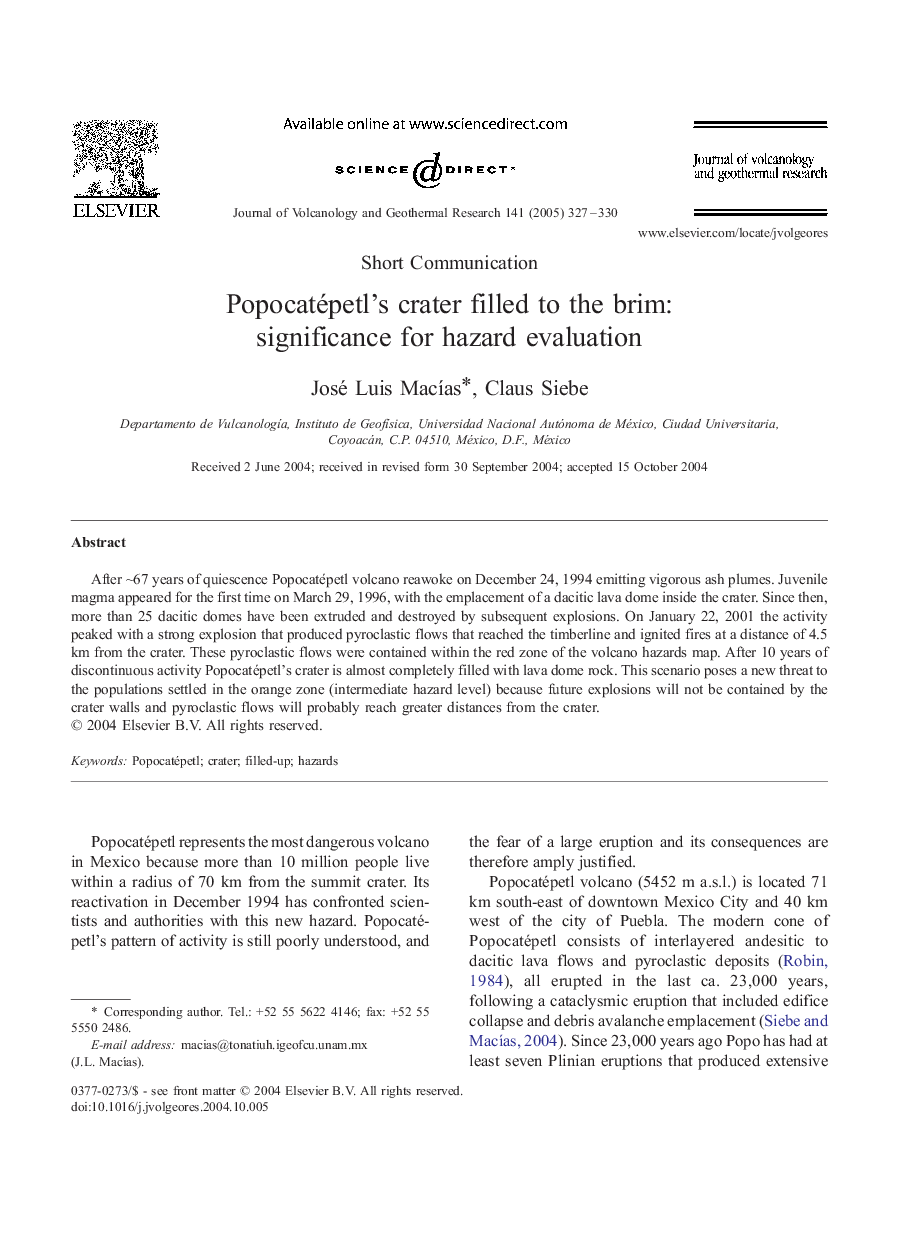| Article ID | Journal | Published Year | Pages | File Type |
|---|---|---|---|---|
| 9531295 | Journal of Volcanology and Geothermal Research | 2005 | 4 Pages |
Abstract
After â¼67 years of quiescence Popocatépetl volcano reawoke on December 24, 1994 emitting vigorous ash plumes. Juvenile magma appeared for the first time on March 29, 1996, with the emplacement of a dacitic lava dome inside the crater. Since then, more than 25 dacitic domes have been extruded and destroyed by subsequent explosions. On January 22, 2001 the activity peaked with a strong explosion that produced pyroclastic flows that reached the timberline and ignited fires at a distance of 4.5 km from the crater. These pyroclastic flows were contained within the red zone of the volcano hazards map. After 10 years of discontinuous activity Popocatépetl's crater is almost completely filled with lava dome rock. This scenario poses a new threat to the populations settled in the orange zone (intermediate hazard level) because future explosions will not be contained by the crater walls and pyroclastic flows will probably reach greater distances from the crater.
Keywords
Related Topics
Physical Sciences and Engineering
Earth and Planetary Sciences
Geochemistry and Petrology
Authors
José Luis MacÃas, Claus Siebe,
